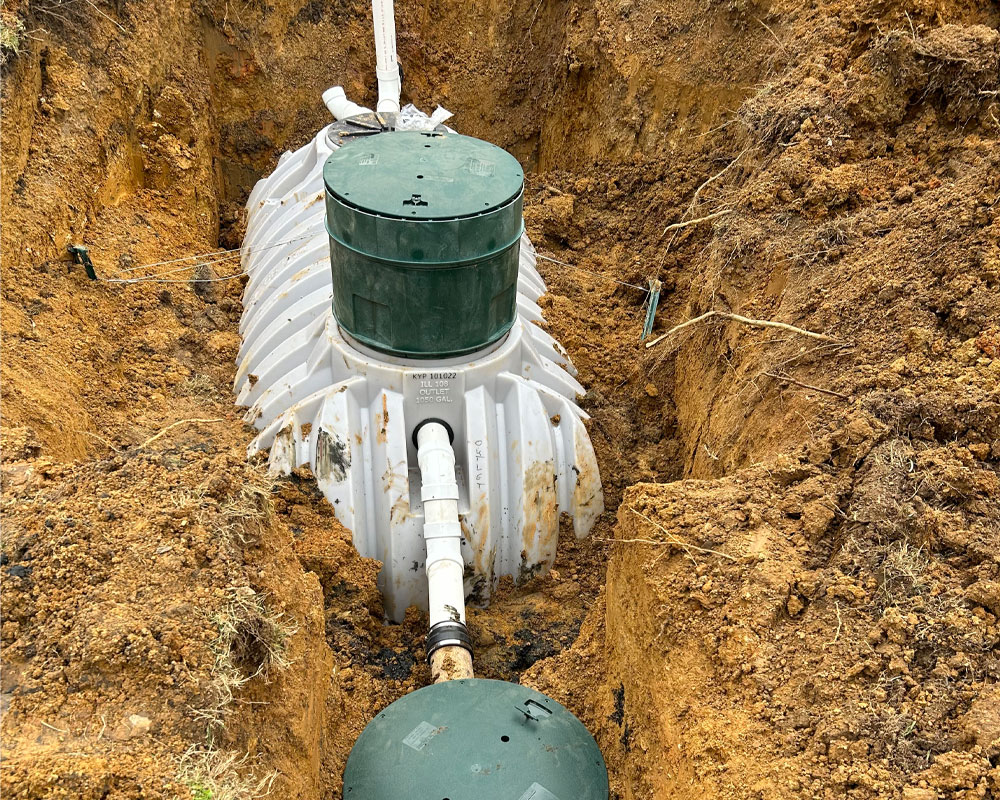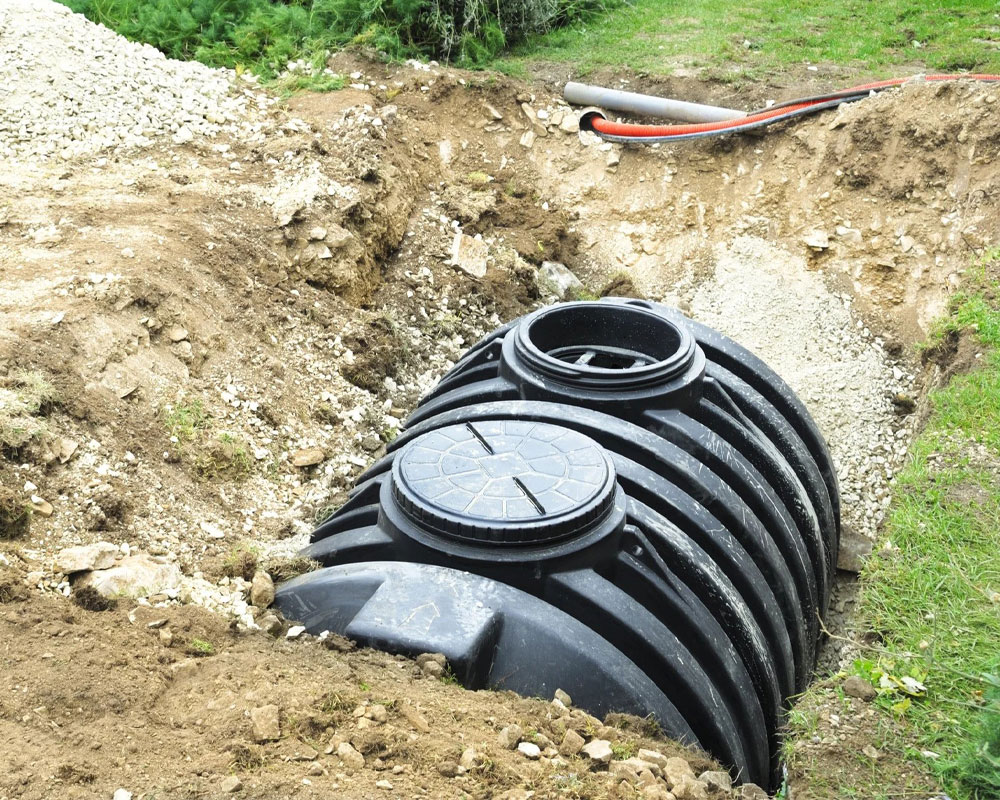Septic Installation near Thurston County, Washington
South Bay Septic & Excavation is Committed to superior quality and results!

AVOID COSTLY MISTAKES:
Do NOT hire an excavating contractor without first reading our free guide:
The ULTIMATE Excavation & Septic "Success Guide."

Septic Installation near Thurston County in Washington: Straight Answers That Help You Decide
You’re likely standing on a property in Thurston County, Washington, weighing permits, soils, timelines, and the worry of getting it wrong. This page offers a clear tour of how septic installation works here: what it does, why it matters, and how to hire the right crew without stress. Treat it as the practical guide a neighbor would hand you across the fence.
How Can We Help?


What a Modern Septic System Does—And Why It Matters
A septic system treats wastewater and returns clean effluent to the soil. In daily life, that means toilets flush, showers drain, and the ground around your home stays healthy. Core components include the tank, distribution features, and the drain field. In Washington’s varied soils—gravelly in some places, dense and wet in others—design choices matter. Proper sizing, site-specific engineering, and code-compliant construction protect your investment, your well, and nearby waterways. When the system is matched to your soil and household use, it runs quietly in the background for years with minimal hassle.
What are the benefits?
First, control and independence. With a well-designed system, you aren’t relying on city sewer expansions or rate hikes, and you can build on rural sites that do not have public sewer. Second, property value. Buyers in Thurston County expect a functional, inspected system—often a make-or-break item during negotiations—so documentation and a clean installation history support a stronger sale. Third, health and environment. A properly installed system prevents surface pooling, odors, and contamination of wells, streams, and wetlands. Fourth, long-term savings. Upfront engineering and careful installation reduce repairs, pumping emergencies, and premature replacements. Finally, peace of mind: clear maintenance steps and accessible components make ownership straightforward.
Benefits of Choosing Septic Installation near Thurston County Expertise
What are the benefits of hiring a Septic Installation nearThurston County specialist? Local knowledge is invaluable. You get professionals who understand Washington codes and county permitting, from site evaluations and soils reports to final approvals. They know when a conventional gravity system fits, when pressure distribution is necessary, and when advanced treatment is the smart choice. They balance setbacks from wells and streams, manage slopes and driveways, and plan access for future maintenance. That experience turns guesswork into a predictable process with fewer surprises and cleaner inspections.
Septic Installation near Thurston County—Planning That Starts With the Soil
Every successful project begins with a site visit and soil science. A licensed practitioner evaluates topography, digs test pits, and observes soil texture, structure, and seasonal water indicators. Per Washington code, these findings guide design capacity, tank type, treatment level, and drain field technology. If your lot is wooded, steep, or restricted, that is not a deal-breaker; it simply means the design must be tailored with features like dosing, pressure distribution, mound construction, or alternative layouts. You should expect a plan that fits your bedroom count, daily use, and long-term goals.
See Our Services

✔️ Commercial Excavation
✔️ Residential Excavation
✔️ Swimming Pool Excavation
✔️ Basement Excavation
✔️ Demolition
✔️ Foundation Digging
✔️ Large Pond Construction
✔️ Small Pond Construction
✔️ Dozer work
✔️ Road Construction
✔️ Septic installs traditional systems
Quality Services Launched FAST!

✔️ Septic tanks - aerobic systems
✔️ Septic tanks - Plastic/poly
✔️ Septic tanks - Concrete
✔️ Septic Design
✔️ Drain field replacement
✔️ Grading
✔️ Lot clearing
✔️ French Drains
✔️ Retaining walls
✔️ Sewer repairs
✔️ Drainage systems
✔️ Land Clearing
What Are You Waiting For?
What is the process for hiring a Septic Installation near Thurston County?
Start with discovery. Share goals, house size, timeline, and any plans such as additions or accessory dwelling units. Ask for licensing, insurance, and recent local references. Next comes evaluation and design. A professional conducts test pits, maps setbacks, and drafts a plan that meets Washington and county standards. Then permitting. Submittals go to the health department for review while materials and staging are coordinated. Construction follows: excavation, tank placement, piping, and drain field installation with inspection milestones. After installation comes commissioning and education: you learn where every component lives, how to care for it, and what maintenance schedule to follow.
Clear Pricing, Clear Scope—No Surprises
Insist on an itemized proposal. It should list design work, permit fees, excavation, tank and treatment components, imported sand or rock, electrical work if needed, restoration, erosion control, and contingency for rock or groundwater. Transparent bids allow apples-to-apples comparisons and protect you from vague allowances. If a number seems too good to be true, it usually excludes essentials you will pay for later. Make warranty terms explicit: workmanship, components, alarms, and responsibility for permit corrections. Ask how change orders are handled and what triggers them, so scope and budget stay aligned.
Timelines That Respect Seasons
In Thurston County, rainfall and groundwater levels shape excavation windows. Dry months are efficient, but skilled teams install year-round using erosion control, dewatering, and smart staging. Ask how weather affects backfill and final grading, and how the crew protects soils during wet periods. Reliable schedules include float for inspections and material lead times. Communication matters; weekly updates keep you informed and reduce stress, especially when coordinating with builders, well drillers, or utility crews.
Maintenance Starts the Day You Install
A system designed for your soil and household habits will last longer and cost less to own. Get a simple owner’s guide: what not to flush, pump intervals, filter cleaning, and how to protect the drain field from vehicles, heavy structures, and deep-rooted landscaping. Budget for routine service instead of waiting for urgent, expensive fixes. Add risers and access lids so service is quick and affordable. Keep a file with permits, as-builts, and service records—future buyers and inspectors will thank you. Clear records also make warranty claims faster if you ever need them.
How to Choose With Confidence
Use three criteria: proof, process, and people. Proof means permits pulled correctly, references from recent local installs, and photo documentation at each stage. Process means documented steps from soil test to final inspection, with clear responsibilities and communication checkpoints. People mean they listen, educate, and offer options that weigh cost, performance, and maintenance. When those three align, you have real value, not just a low bid, and you gain a partner invested in the long-term health of your property.
Septic Installation near Thurston County: Questions to Ask Before You Sign
Ask about soil findings and how they influenced the design. Clarify whether the plan is gravity, pressure, or advanced treatment, and why that choice fits your site. Confirm who handles permits, utility locating, erosion control, inspection scheduling, and final as-builts. Request a timeline that includes weather contingencies and restoration steps. Verify what restoration is included: rough grade, topsoil, seed, or hydroseed. Finally, learn how to reach support if alarms sound, surface pond, or you need routine pumping; fast answers prevent small concerns from becoming expensive problems.
Ready to move forward?
If you are seeking practical, local guidance for Septic Installation near Thurston County, WA, outline your goals, request a site assessment, and ask for an itemized scope. With the right plan, you will protect your home, your land, and your budget for years to come.
Hours: Mon - Fri: 7:00 am - 6:00 pm
Extended hours by appointment only.
Certifications:
UBI# 604933452
# SOUTHBT779NQ
South Bay Septic & Excavation LLC
Address: 2701 FISHTRAP LOOP NE OLYMPIA 98506-9609 WA
All rights reserved | Client Support Area

